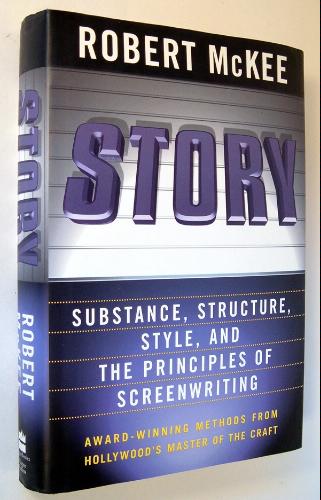Found this looking up Blake Snyder's name
this looks interesting
http://writingforstagescreen.suite101.com/article.cfm/save_the_cat_screenwriting_book
Blake Snyder discusses what makes a great story using his 15 Point Beat Sheet.
Suite101: After 20 successful years of selling spec screenplays to Hollywood, what storytelling elements have you found that have helped you sell your stories?
Blake Snyder: I talk about a lot about primal, what draws me to most stories is what’s primal about it. You know, mothers and daughters, fathers and sons, brothers and sisters, things we recognize and have recognized forever.
Juno was a big hit because it satisfies every on of the log line & poster requirements that I talk about in my book. I mean teenage pregnancy is extremely primal. It follows the 15 Point Beat Sheet model exactly. I don’t know if the Diablo Cody, the screenwriter set out to do it, but regardless, she satisfied a storytelling template that works. So it’s a template we can learn. So between the two things, “What is it?” and executing that is a concern. That’s what writers should be concerned with.
Suite101: Can you please elaborate about your 15 Point Beat Sheet found in your book?
Blake Snyder: Save the Cat! has 15 points in every story. I came up with this because early on I was very bad at plotting and story. I’d go into meetings with producers with great ideas and then pitch out a few lousy little set pieces and they’d say, “And what else?” So I began searching for a story that I could count on, so if a Producer responded to an idea of mine, within a very short time, I could go into their office and tell them that great story. That’s what I found in these 15 points.
All stories are about transformation. At point 1 the hero is one way, and at point 15, the finale, he is completely the opposite. Well, what happened? And act 2 traditionally is what I call the transformation machine. They walk in one way and they don’t come out the same. They’ve been transformed in a way that we won’t even recognize them by the end.
Suite101: What kind of feedback have you received from your book?
Blake Snyder: I had someone tell me after they read my book “You’ve cracked Act 2. You’re the guy who’s demystified Act 2.” The Beat Sheet is a little pachinko machine that hits all the little nodes in order to transformation. This isn’t a formula, but a devise that frees you to be more creative. If you look at this Beat Sheet and use it, you’ll find that it’s the most freeing thing you’ll ever find. It doesn’t confine you at all.
Blake Snyder's 15 Point Beat Sheet with page locations in ( ) as found in Save the Cat!:
1. Opening Image (1) - The first impression of a movie - its tone, mood, and scope.
2. Theme Stated (5) - Thematic premise.
3. Set-Up (1-10) - Introduce the hero, the stakes, and the goal.
4. Catalyst (12) - A life changing event for the hero.
5. Debate (12-25) - The hero must decide how to proceed in life
6. Break Into Two (25) - Entering the new world of Act Two.
7. B Story (30) - Second plot that gives a breather to the main story.
8. Fun and Games (30-55) - Having fun in the new world.
9. Midpoint (55) - Stakes raised with a false victory or false collapse.
10. Bad Guys Close In (55-75) - Villains regroup against the hero.
11. All Is Lost (75) - Opposite of the Midpoint that signifies transition from hero's old ways.
12. Dark Night of the Soul (75-85) - Worse moment for the hero.
13. Break Into Three (85) - Main Story & B Story converge for hero to find a solution.
14. Finale (85-110) - Hero triumphs over villains to create a new society.
15. Final Image (110) - Opposite from Opening Image to show a change occurred.
Read Part 2 of Blake's interview: Tips from a Spec Screenwriter
In his 20-year career as a screenwriter and producer, Blake Snyder has sold dozens of scripts, including co-writing Blank Check, which became a hit for Disney, and Nuclear Family for Steven Spielberg — both million-dollar sales. He is the author of "Save the Cat! The Last Book on Screenwriting You'll Ever Need"





